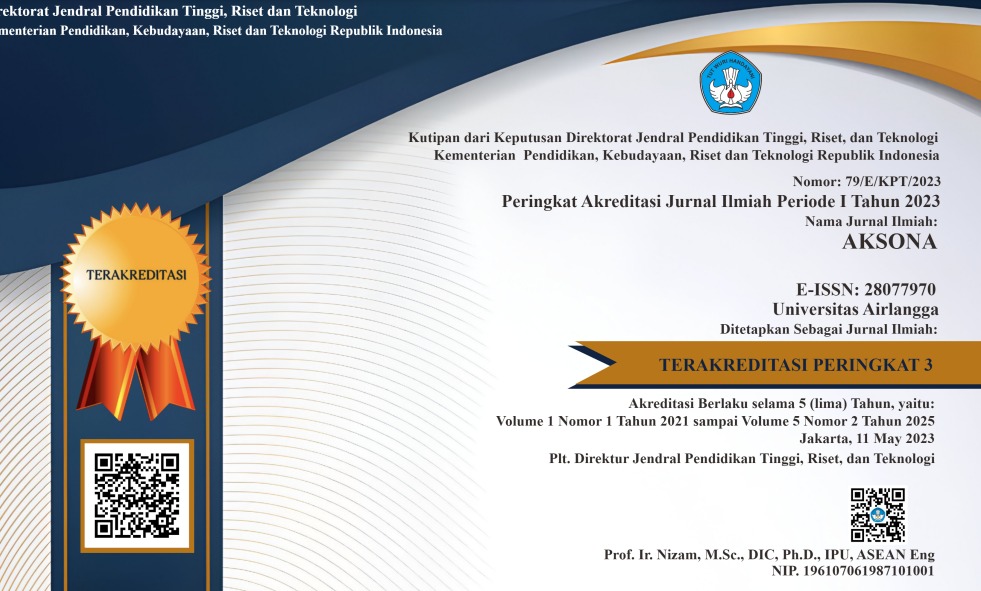Spontaneous Intracranial Hemorrhage in a 34-Year-Old Male Patient Related to Hypertensive Emergency
Downloads
Highlight:
- Unhealthy lifestyles are believed to be cause of hypertension at a young age.
- Untreated hypertension increases cardiovascular disease morbidity and mortality.
- The incidence of intracranial hemorrhage associated with hypertension is approximately 60%. It commonly occurs in the deep brain structure, which is considered to have a poor clinical outcome.
ABSTRACT
Introduction: The incidence of hypertension is currently moving toward younger ages. It’s thought that an unhealthy lifestyle serves as a trigger. Hypertension can increase morbidity and mortality related to cardiovascular disease, even at a young age. This case report is intended to report the incidence of spontaneous intracranial hemorrhage in a 34-year-old male patient during a hypertensive emergency. Case: A 34-year-old male patient was rushed to the emergency unit at midnight due to a sudden decrease in consciousness. Headaches and seizures occurred before admission. The patient denied having any history of head trauma. The patient’s habits included excessive caffeine consumption, frequent late-night sleeping, and extensive smoking. At the time of admission, the patient’s vital signs indicated a poor clinical condition: GCS E1V1M1, BP 212/118 mm/Hg, deep irregular rapid breathing, sometimes followed by periodic apnea, RR 28 breath/minute, HR 111 beat/minute, SpO2 50%, T 36.8°C, which gradually developed hyperthermia. Both eyes had constricted and fixed pupils; the light reflexes were negative. A neurological examination revealed the body’s left lateralization. The head CT scan without contrast indicated hemorrhage in the right intracerebral, midbrain, pons, intraventricular, and subarachnoid areas, with estimated total volume of about 31 ml. Conservative treatment was chosen due to the bleeding location in the deep brain structure of GCS 3, which was considered to have a poor outcome. Conclusion: Hypertension in the younger age group is commonly associated with unhealthy lifestyles, which increase morbidity and mortality related to cardiovascular disease.
Rison SC, Carvalho C, Rull G, Robson J. Investigating hypertension in younger patients. BMJ. 2022; 376:e067924. doi: 10.1136/bmj-2021-067924
Meher M, Pradhan S, Pradhan SR. Risk factors associated with hypertension in young adults: A systematic review. Cureus. 2023; 15(4):e37467. doi:10.7759/cureus.37467
Hinton TC, Adams ZH, Baker RP, Hope KA, Paton JFR, Hart EC, et al. Investigation and treatment of high blood pressure in young people. Hypertension. 2020; 75(1):16–22. doi/10.1161/HYPERTENSIONAHA.119.13820
World Health Organization. Hypertension. 2023. Available at: https://www.who.int/news-room/fact-sheets/detail/hypertension
Rokom. Hipertensi penyakit paling banyak diidap masyarakat. Kementerian Kesehatan Republik Indonesia. Jakarta; 2019. Available at: https://sehatnegeriku.kemkes.go.id/baca/umum/20190517/5130282/hipertensi-penyakit-paling-banyak-diidap-masyarakat/
Ondimu DO, Kikuvi GM, Otieno WN. Risk factors for hypertension among young adults (18-35) years attending in Tenwek Mission Hospital, Bomet County, Kenya in 2018. Pan Afr Med J. 2019;33:210. doi: 10.1160/pamj.2019.33.210.18407
Connelly PJ, Currie G, Delles C. Sex differences in the prevalence, outcomes and management of hypertension. Curr Hypertens Rep. 2022; 24(6):185–92. doi: 10.1007/s11906-022-01183-8
Grillo A, Salvi L, Coruzzi P, Salvi P, Parati G. Sodium intake and hypertension. Nutrients. 2019; 11(9):1970. doi: 10.3390/nu11091970
Miranda AM, Goulart AC, Benseñor IM, Lotufo PA, Marchioni DM. Coffee consumption and risk of hypertension: A prospective analysis in the cohort study. Clin Nutr. 2021; 40(2):542–9. doi: 10.1016/j.clnu.2020.05.052
Lan R, Bulsara MK, Pant PD, Wallace HJ. Relationship between cigarette smoking and blood pressure in adults in Nepal: A population-based cross-sectional study. Banik PC, editor. PLOS Glob Public Heal. 2021; 1(11):e0000045. doi: 10.1371/journal.pgph.0000045
Tasnim S, Tang C, Musini VM, Wright JM. Effect of alcohol on blood pressure. Cochrane Database Syst Rev. 2020; 2020(7). doi: 10.1002/14651858.CD012787.pub2
Li M, Yan S, Jiang S, Ma X, Gao T, Li B. Relationship between sleep duration and hypertension in northeast China: a cross-sectional study. BMJ Open. 2019; 9(1):e023916. doi: 10.1136/bmjopen-2018-023916
Mack PF. Intracranial haemorrhage: Therapeutic interventions and anaesthetic management. Br J Anaesth. 2014; 113(S2):ii17–25. doi: 10.1093/bja/aeu397
Rajashekar D, Liang JW. Intracerebral hemorrhage. In: StatPearls. Treasure Island (FL): StatPearls Publishing; 2023. [Book]
Dinallo S, Waseem M. Cushing reflex. In: StatPearls. Treasure Island (FL): StatPearls Publishing; 2023. [Book]
Pinto VL, Tadi P, Adeyinka A. Increased intracranial pressure. In: StatPearls. Treasure Island (FL): StatPearls Publishing; 2023. [Book]
Kemp W, Bashir A, Dababneh H, Cohen-Gadol A. Cushing’s ulcer: Further reflections. Asian J Neurosurg. 2015; 10(2):87–94. doi: 10.4103/1793-5482.154976
Park JI, Hwang S-K. Central hyperthemia due to intracerebral hemorrhage treated with baclofen: A case report. The Nerve. 2021; 7(2):103–5. doi: 10.21129/nerve.2021.7.2.103
Levis JT. ECG diagnosis: Deep T Wave inversions associated with intracranial hemorrhage. Perm J. 2017; 21(1). doi: 10.7812/TPP/16-049
Mohamed AA, Ezzat AAM, Aboul-Ela HM. Comparative study between conservative and surgical management of intraventricular hemorrhage. Med J Cairo Univ. 2022; 90(9):1335–9. doi: 10.21608/MJCU.2022.264488
Copyright (c) 2024 Mifta Nurmalasari, Djoko Widodo

This work is licensed under a Creative Commons Attribution-ShareAlike 4.0 International License.





















